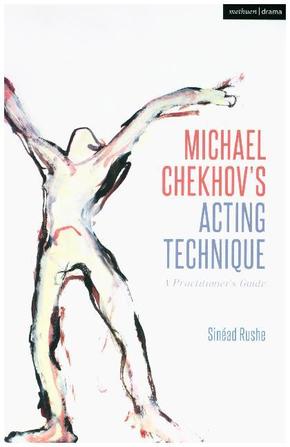
Michael Chekhov's Acting Technique - A Practitioner's Guide
| Verlag | Bloomsbury Specialist |
| Auflage | 2019 |
| Seiten | 360 |
| Format | 13,8 x 21,5 x 2,0 cm |
| Gewicht | 462 g |
| Artikeltyp | Englisches Buch |
| Reihe | Performance Books |
| ISBN-10 | 1408156881 |
| EAN | 9781408156889 |
| Bestell-Nr | 40815688UA |
Provides a complete overview of the Michael Chekhov method, offering clear explanations of the principles, practical exercises and application of the exercises to dramatic texts.
Klappentext:
Intended for actors, directors, teachers and researchers, this book offers an exceptionally clear and thorough introduction to the renowned acting technique developed by Michael Chekhov. Sinéad Rushe's book provides a complete overview of the whole method, and includes illuminating explanations of its principles, as well as a wide range of practical exercises that illustrate, step by step, how they can be applied to dramatic texts. Part One provides an outline of the ideas that underpin the work, which help to prepare practitioners to become responsive and receptive, and to awaken their imagination. Part Two charts a journey through the foundational psychophysical exercises that can both orient an actor's training routine and be applied directly to the development of a role. Part Three focuses on more specific and elaborate methods of scene work, characterisation and the art of transformation. Drawing on the full range of Chekhov's writing in English and French, this book also exa mines unpublished material from the Dartington Hall archives and features interviews with actors who have worked with the technique, including Simon Callow and Joanna Merlin. It illustrates Chekhov's approach by referring to Rushe's own productions of Nikolai Gogol's short story Diary of a Madman and Shakespeare's Othello, as well as characters and scenes in Sarah Kane's Blasted and the contemporary American television series Breaking Bad. Michael Chekhov's Acting Technique is an accessible, comprehensive and contemporary point of reference for those already trained in the method, as well as an initiation and toolkit for practitioners who are just beginning to discover it.
Inhaltsverzeichnis:
PrefaceAcknowledgmentsList of AbbreviationsIntroduction: Guiding PrinciplesA Note on the Context of Chekhov's workPart One: Preparation The ideal centre The four brothers: feeling of ease Receiving The four brothers: feeling of form The four brothers: feeling of beauty The four brothers: feeling of entirety Radiating Expansion and contraction Part Two: Practice Qualities of movement: moulding, floating, flying, radiating Further qualities of movement: staccato/legato, curved/straight Directions in space Archetypal gesture The three sisters: rising, falling, balancing Image and imagination Improvisation Transition: TransformationPart Three: Performance Imaginary body Imaginary centre Stick/ball/veil Archetypes Psychological gesture Subjective atmosphere Objective atmosphere Extras: ghost exercise, character biography Conclusion: Theatre of the FutureChronology of Michael Chekhov's Career
Rezension:
A long-time practitioner of Chekhov's acting technique, Rushe (Central School of Speech and Drama, UK) has delivered a valuable, comprehensive look at many of the acting tools Chekhov pioneered at the turn of the 20th century . Particularly noteworthy is Rushe's creation of a careful pathway through all the material. Each exercise builds on its predecessor in a way that shows the author's attention to detail and mastery of the subject matter . Though aimed at modern practitioners of acting, academics should not shy away from this guide, given its thorough research and its historical relevance. This volume will be a useful resource for those studying acting theory, theater history, or the pedagogy of acting. CHOICE
